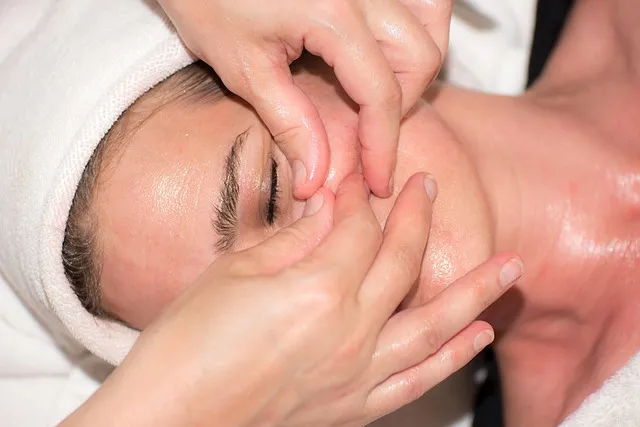A chemical burn might result when a person gets into close touch with a chemical substance or its vapors. Anybody can get chemical burns anywhere, whether inside their homes, in the workplace, at school, outside, or during an attack.
Powerful acids, drainage cleaners, paint thinner, petrol, and various other chemicals can induce chemical burns, which are tissue injuries. Typically, you are conscious of the cause of this kind of burn.
However, occasionally a burn brought on by a gentler chemical can't always be apparent right away. Hours after the exposure, just like with other sunburns, signs of injury could appear. Urgent medical attention is required for severe chemical burns. First aid may generally be used as a Chemical burn treatment.
This article will examine the symptoms, causes, and how to treat Chemical burns and Prevention, so continue reading to learn more.

What are the types of Chemical Burns?
According to the extent of the damage, chemical burns are classified similarly to other burns:Superficial thickness
Only the epidermis, the skin's outermost layer, is harmed by superficial or first-degree burns. Although the region will be painful and red, there typically isn't any long-term harm.Partial thickness
Extending into the dermis, the second layer of skin is called Partial thickness burns. It might cause swelling, blisters, and scarring.Full-thickness
Third-degree burns penetrating the skin's entire depth might harm the tissue below. The region could seem white or black. You may not experience discomfort because your nerves have been damaged.How are chemical burns treated?
The following are the effective ways to treat chemical burns:
1 First-aid treatment
Burns can result in shock, agony, blisters, scarring, swelling, and even death. They may spread infections as well. The course of medical care depends on the nature, depth, and severity of the burns and the amount of tissue damage.2 Rinse with water:
Apply cold water to the burnt region of your skin's surface or eyes. Since chemicals can still harm your skin following contact, keep washing for at least 30 minutes. Try not to let any other areas of your skin come in contact with the polluted water. Chemicals like acidic substances such as carbolic acid, phenol, dry powdered substances, and metallic substances shouldn't be washed with water. There are two positive outcomes of this Chemical burn treatment. It lessens or stops the pain, avoids the burn from getting worse, and keeps the burn from injuring deeper layers of the skin.3 Remove clothing and clean the area:
The burn must be completely cleaned after being rinsed with cool water. Take off any jewelry or clothes that have been exposed to the toxin. If feasible, lightly wrap the burnt area in a dry, sterilized bandage or a clean towel. People shouldn't do the scrubbing and instead use a moderate antibacterial soap. It is possible to avoid infection by gently cleansing the burn. The recovery time can be delayed if an infection spreads inside the burn. People could need medical care if their burned skin does not recover properly.4 Apply Bandages
If the burn wounds have closed, a person can skip the required bandage for small burns. A bandage could act as a bacteria-resistant barrier if the burn's site makes chafing likely if dust can readily get under the layer of tissue or if those blisters have begun to ooze. Avoid placing adhesive bandages firmly on the injury, and secure the bandage gently.5 Antibiotic Creams
Antibacterial lotions and ointments are advised when a burn develops open blisters. Antibiotic creams may help a burn to heal more quickly by preventing contamination in the area of burns. Additionally, some topical lotions include painkillers that might reduce pain. Cover any visible blisters after using an antibiotic lotion to prevent wound infection.6 Pain Medication
Minor burns hurt while they are healing. A person may take medication as a Chemical burn treatment to aid with pain relief and swelling reduction. Ibuprofen is a secure and reliable option for pain relief. It is a kind of NSAID, or nonsteroidal anti-inflammatory medicine, which helps lessen swelling.7 Medical Treatments
- To restore normal heartbeat and blood pressure, intravenous fluids can be required.
- Any drugs required to manage pain or prevent infection may be administered by IV access.
- If necessary, you will be provided an antidote to the hazardous chemical. Frequently, antibiotics aren't needed to treat mild chemical burns.
- Wounds will be cleansed and dressed with sterile wrapping and therapeutic creams as required. Another medical expert may be consulted if necessary.
- Burns frequently cause intense pain. The doctor who treated you will address effective pain management.
- Your airway may be fitted with a breathing device if there are any signs that you may have breathing issues.
- You could require surgery for serious burns. An area of flawless skin from another part of your body or even from someone who donated it can be transplanted to replace the damaged layer of skin in a procedure known as skin grafting.
- Scars may require surgical treatment, either reconstructive or cosmetic. Thanks to physical and occupational therapy, your range of motion won't be restricted by scars.
- Support networks and counseling can assist with emotional problems brought on by trauma following the accident or deformity.
What are the causes of Chemical Burns?
Strong chemicals can destroy cells when touched with your skin, eyes, or other tissue. Heat burns are rarely as dangerous as chemical burns. A wide variety of chemicals can bring on chemical burns. Among the most typical are:- Ammonia.
- Battery's acid.
- Concrete mix.
- Bleach.
- Toilet bowl or drain cleaners.
- Products for whitening teeth.
- Detergents.
- Fertilizers.
- Hair relaxers.
- Rust-removal products and metal cleansers.
- Paint removers.
- Pesticides.
- Disinfectants and sanitizers.
- Chemicals for swimming pools.
What are the Symptoms of Chemical Burns?
Medical evacuations need to be considered for any chemical burns. Call the ambulance, whether chemical burns to your mouth or throat, and obtain emergency medical care. The face, eyes, limbs, and legs receive chemical burns the most frequently. Chemical burns often don't require hospitalization and may be treated outpatient. Burns caused by chemicals, however, can be deceptive. Some substances can potentially induce severe harm to tissues that are difficult to see at first glance.- Chemical burns can cause the following signs and symptoms:
- Redness, itchiness, or burning where the touch occurred.
- The area of touch may feel numb or painful.
- The appearance of black dead skin or blisters at the point of touch.
- If the chemical enters your eyes, it affects your vision.
- Coughing or breathing difficulties.
What Prevention should be taken while using chemicals?
- Secure all chemicals entering and leaving the house in locked cupboards or outside children's reach.
- Chemicals should be kept in their original packaging. After usage, chemicals should be carefully stored.
- Avoid allowing chemicals to contact the skin and use them sparingly. Make sure the space where you operate is well-ventilated.
- Always adhere to the instructions and safety warnings listed on the product's label while utilizing chemicals.
- Remember that safety comes first, that you should leave chemicals in the original packaging with safety warnings, and that you should wear protective gear and eyewear.
- Refrain from combining chemicals, and only buy substances in contaminants that are protective.
Conclusion -
More tissue damage results from chemical burns than from other forms of burns. The researchers found that the high toxic levels of chemical products and their application techniques were to blame for the seriousness of such wounds. While more serious injuries need prolonged and complex treatment techniques, minor burned areas will recover quickly with care. With the right care and, if necessary, rehabilitation programs, most patients may recover and lead normal lives.
Reviewed by







